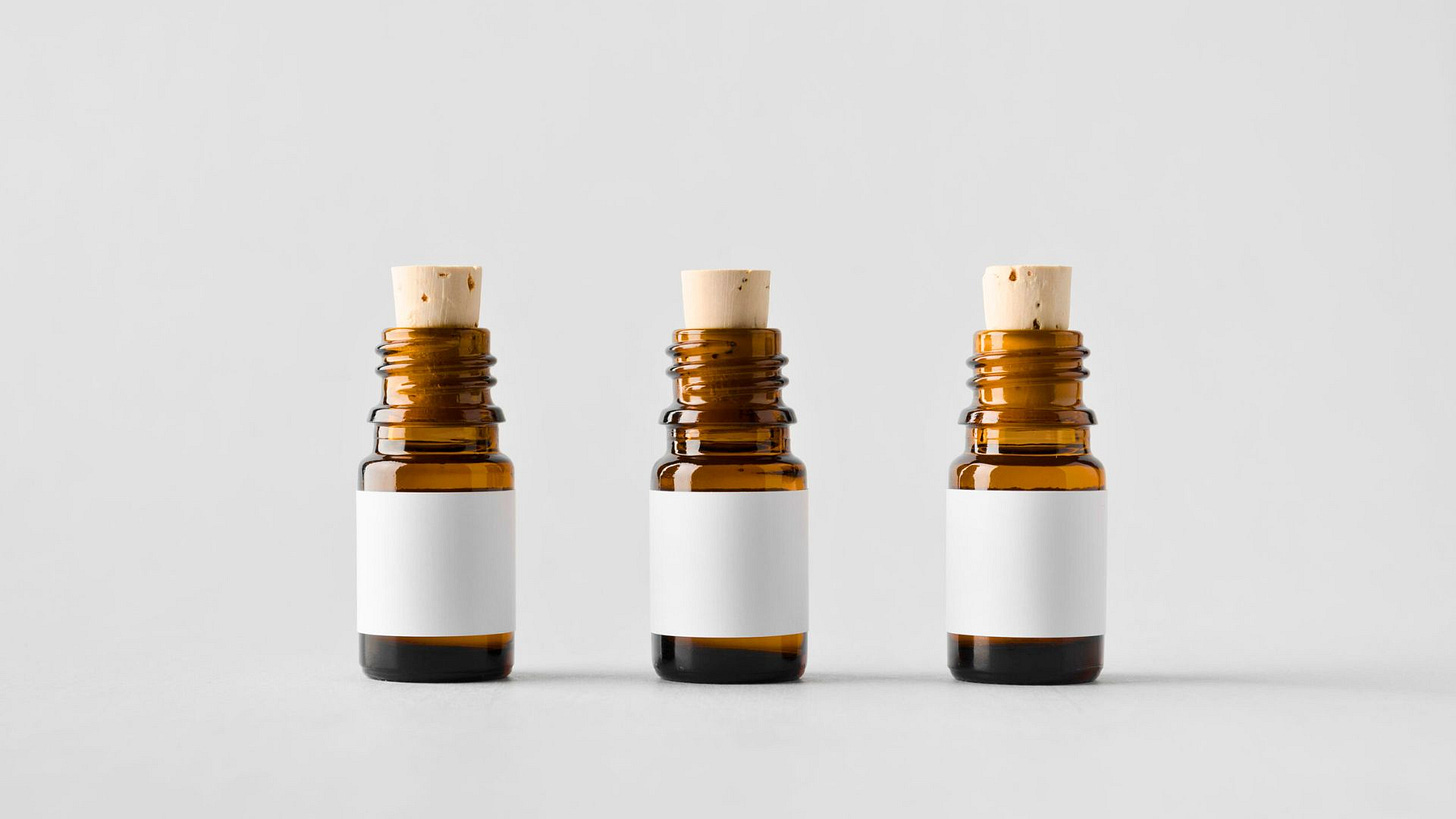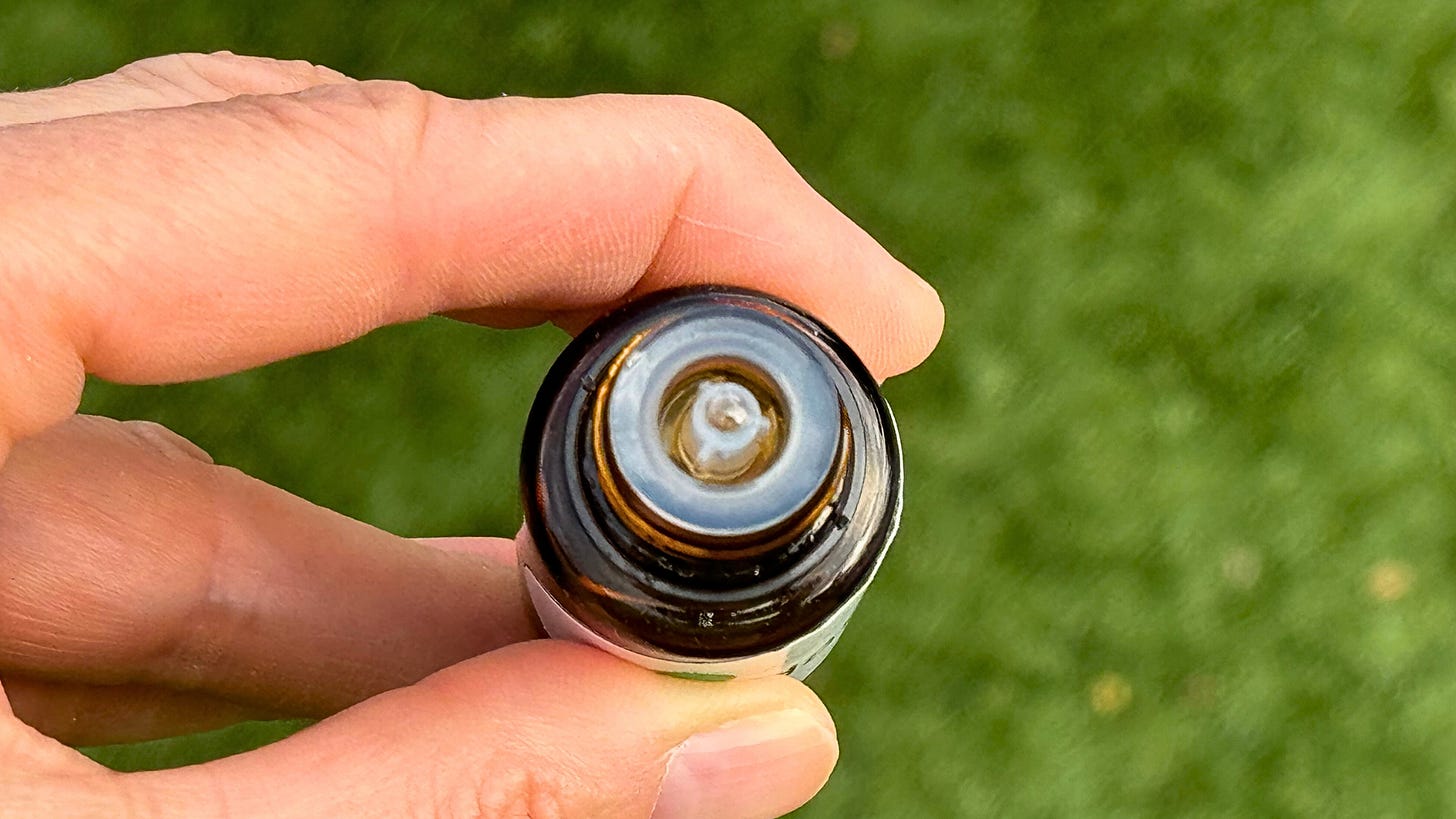Message in a Bottle
Honoring the hidden universe inside our essential oils.
I came across this crazy statistic the other day, and it made me really think.
According to Grand View Research, the global essential oil market was valued at US$23.74 billion in 2023, and is projected to grow to US$41 billion by 2030. That’s a mind-boggling +72% growth in just seven years. 🤯
If you’re a perfumer or aromatherapist, that might not surprise you. There are more indie perfumers today than ever before, and more people are turning to aromatherapy for emotional and mental support in these turbulent times.
But that number goes far beyond those industries. Essential oils can be found in everything these days - from skincare and haircare to food, drinks, cleaning products, and candles. There’s an insatiable demand for natural plant essences in nearly every aspect of our lives.
And yet…
How often do we stop to think about what’s inside the bottle?
Not Just Liquid - A Landscape
It’s easy to see a bottle of essential oil as a finished product. But what’s inside isn’t just scent. There’s a whole universe of hidden stories - of ecosystems, communities, labor, and land.
Every drop begins with a plant. But that plant is shaped by the soil it grows in, the climate it depends on, and the pollinators that keep the cycle alive. The entire ecosystem matters.
Even the location matters. Lavender from Provence doesn’t smell like lavender from Bulgaria. Why? Because the terroir, the land’s unique ‘fingerprint’, changes everything: the minerals in the soil, the wind, the elevation, even the way the sun hits the leaves.
Rooted in Human Hands
Behind every plant are people and communities. Farmers, harvesters, and distillers who know how to feed the soil, when to pick for maximum scent, know how to transport delicate blossoms, and understand how best to distill. Many use traditional techniques passed down through generations. It’s really not just labor, but also a craft.
The Magnitude We Don’t Recognize
Here’s what you might not realize: essential oils are highly concentrated substances that require a lot of plant material.
For example, it takes 30-50 roses to produce a single drop of rose oil (Rosa × damascena). So, the 1 oz (30 ml) essential oil bottle you have means it took 18,000- 30,000 roses to fill that bottle.
Or take, for example, lavender essential oil (Lavandula angustifolia). You need about 63 lbs (28.6 kg) of lavender flowers to produce a 13 oz (380 ml) bottle of lavender essential oil. Crazy, isn’t it?
So when you hold an essential oil bottle in your hand, you’re carrying the output of fields of plants, years (even centuries) of labor, and countless hours of growth.
And still - so much is wasted.
We buy more than we use. We let bottles expire. We forget them in drawers. We chase what’s trending instead of honoring what we already have. And in doing so, we forget the weight of what each drop represents.
In an industry growing this fast, it’s more important than ever to slow down.
We need to reconnect with the story behind the bottle. We need to respect the ecosystems, the hands that toil, and the communities that make these oils possible.
We need to consume with intention, not just curiosity.
So next time you open your essential oil bottle, or consume something with natural essences, take a moment to reflect.
Smell it slowly… Imagine the soil, the bees, the sun, the hands. Let that awareness transform how you use it.
Because when you really understand what goes into a drop, it stops being just a product, and starts feeling like a story: From the land. From the people. From the plant.
There’s a message in every bottle.
For my paying subscribers, here’s a recent message I received from my cedarwood (Juniperus virginiana) essential oil bottle during my morning scent journaling session.
Keep reading with a 7-day free trial
Subscribe to An Aromatic Life to keep reading this post and get 7 days of free access to the full post archives.



